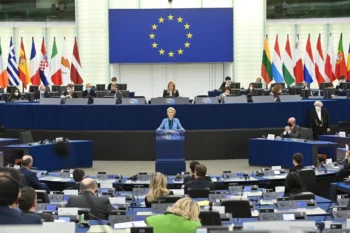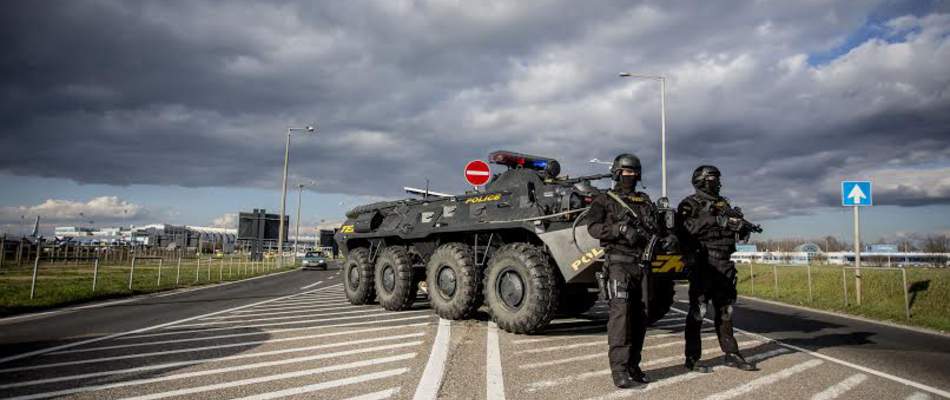Even the currency of war-torn Ukraine is outperforming the forint
According to some experts, it cannot be ruled out that the price of a euro will slowly rise to 440 forints. Last week, the forint has repeatedly hit its historic lows against the euro. Not even in Bulgaria or Albania is the euro so expensive!
Hungarian forint is doing worse than ever
While even war-torn countries are able to stabilise, Hungary is experiencing a deep downturn, Pénzcentrum.hu reports. The euro is threateningly close to 400 forints. The central bank tried to improve the situation by raising interest rates, but this did not help either, as the forint weakened even after the announcement on Thursday.
Central European currencies
Other currencies in Central Europe have weakened especially since the outbreak of the Russian-Ukrainian war, but none to the extent of the Hungarian currency. In addition to the Hungarian forint, Pénzcentrum.hu looked at the currencies of nine countries to see which weakened the most in the period after January 1st and after the outbreak of the Russian-Ukrainian war.
What they found was the fact that the Hungarian forint is leading the weakening. Our currency has weakened by 11 percent against the euro since the very first day of the year, compared to only 4.5 percent for the Polish zloty.
The V4 countries are also coping quite well with the deterioration of their currencies, which were also weakened by the war. The Czech koruna took a nosedive at the beginning of March, but had recovered somewhat by 7 March.
Ukraine and Russia
It is also difficult to explain why Ukrainians, invaded by Russia in February, have been able to maintain the stability of their currency, writes the newsportal. Evidently, in the weeks after the outbreak of the war, the currency has weakened slightly – close to 33 hryvnias to the euro – and on 7 July, the euro was worth 30.17 hryvnias. This is even slightly better than the figure of 1 January.
On 1 January, the price of a euro was 85 Russian roubles, a figure that rose brutally after the outbreak of the war, to 148 at the beginning of March. Despite the near bankruptcy and technical insolvency, the euro is now below 65 roubles. This is also better than the January figure.
11 percent weakening
What is shocking is that the forint has depreciated by 11 percent since January. Among our neighbours, the Ukrainian currency has even strengthened, the Serbian dinar has strengthened minimally and the Croatian kuna is at 0 percent – neither did it strengthen nor weaken. Of the countries surveyed, only the Polish zloty has depreciated, apart from the forint: the euro is now 4.35 percent more expensive in Poland than it was at the beginning of the year.

Read alsoWill the Hungarian government give in to Brussels to save the forint?
Source: Pénzcentrum.hu, hvg.hu
please make a donation here
Hot news
Top Hungary news: train derailed, huge tax against short-term rentals, new train stations, Hungarians about the war, Dracula, cocktail bars — 21 October, 2024
Hungarian research could yield breakthrough in Covid-19 treatment
5+1 stylish cocktail bars in Budapest to explore with your friends after a long day
Railway stations in major Hungarian cities to be completely rebuilt with private capital
Young people planning armed attacks against protected persons in Hungary – US intelligence warns
Hungary, Laos agriculture ties strengthening: Minister Linkham Duangsavanh visits Budapest





3 Comments
Rouble and hryvnia quotations do not reflect market forces as they are being kept artificially high, it’s as simple as that… Btw, another interest rate hike today has done some good to the forint
Embarrassing.
Factually – it is KNOWN – throughout Europe inclusive of the United Kingdom and the United States of America and Globally, that the Hungarian Economy, is a Disaster.
The componentry used by GLOBAL experts, to anaylsis the performance of a countrys Economy – we have been “put on notice” prior to February 2020 to current time, that the Hungarian economy – had no strong nor sound substance to it, leaving it extremely Vulnerable – to global situations and trends.
The high risk factors through the agenda – Financial & Economic – set by the present Government, “driven” and dictated by the present Prime Minister of Hungary – and his Government & Fidesz Party – Victor Orban – we witness a country – in growing Financial & Economic – Turmoil.
(1) – Inflation say 20% and rising.
(2) – Devaluation of the Forint – record lows and still moving down-wards.
(3) – Interest Rates – continual to rise – that could see 10% leval by years end.
(4) – Cost of Living – skyrocketing.
(5) – Increases of Tax – revenue for a “collapsing” – implouding Government.
These are just (5) examples – with numbers of “other” – that factually HIGHLIGHT – the continual down-ward – the WEAKENING of the Hungarian Economy.
The question – rightfully could be asked :
What is needed to bring about a position of STABILITY – to the Hungarian Economy ??
The answer – is NOT again, to go out into the Global Money Market – and ADD to Government Debt.
Hungary – the closeness of relationships with Russia & China – additional “lines of credit”.
To undertake again the already existing – Russian/China financial & economic – to in any form, enlarge Hungarys debt to either of these (2) two countrys – would be a cataclysmic Disaster.
The European Union – for the FUTURE of Hungary – must be Exploited.
Hungary – head between our knees – off to Brussels we should go – if we as a country what to have any form of respectability, identification – endeavouring to remove the tarnished reputation – the damaged brand name of Hungary – that over longtivity – this present Government under PrimeMinister – Victor Orban – has left us to live & deal with.
WHO besides Russia & China – who are Friends with Hungary ???
Would it be in Hungarys best interests long term – if an approach was made to the European Union on the grounds of an EMERGENCY outlay of money, to stay-off, what could be – if ASSISTANCE not lent nor funding provided – the complete collapse of the “broadsheet” – Economic & Financial running & control of Hungary ???
What if the European Union responded favourable – but with Conditions – to an EMERGENCY funding bail-out ?
EXAMPLE of Conditions – not forgetting it would be Longer – than the (2) points I example :
(1) – Hungary goes Euro.
(2) – Hungary – the Government of Hungary – relinquishes – all its POWERS of – Interference and Influence – over the Judiciary of Hungary.
Hungary – if it was to take the road to a recovery process – a Future – the ” Piece meal” or “Mea Culpa” – presented to the European Union – would have rightfully – MASSIVE Conditions.
What a dilemma Hungary – we are in.
Quote of Winston. Spencer. Churchill meaningful, to the PERILOUS times we are in .
” Sometimes our Best is Simple not GOOD Enough.
We have to DO – what is Required”.
What is Required ?
“You have sat to long for any good you have been doing.
Depart, I say, and let us have done with you .
In the name of God, go ! ”
First Served as Prime Minister of Hungary – 1998-2002.
Second “coming” as Prime Minister of Hungary – 2010 to current.
Requirement – read above.
Hungary is heading for the worst recession in it’s history. That’s why the forint is so weak….it will be above 450 per euro by the end of the year. One of the reasons for this is the spending spree before the elections such as election bribes, huge wage increase….etc. Because of that you have a huge budget deficit and a 50% inflation (yes. 50% and not 10% like the layers in power say). The country is going down-Enjoy!